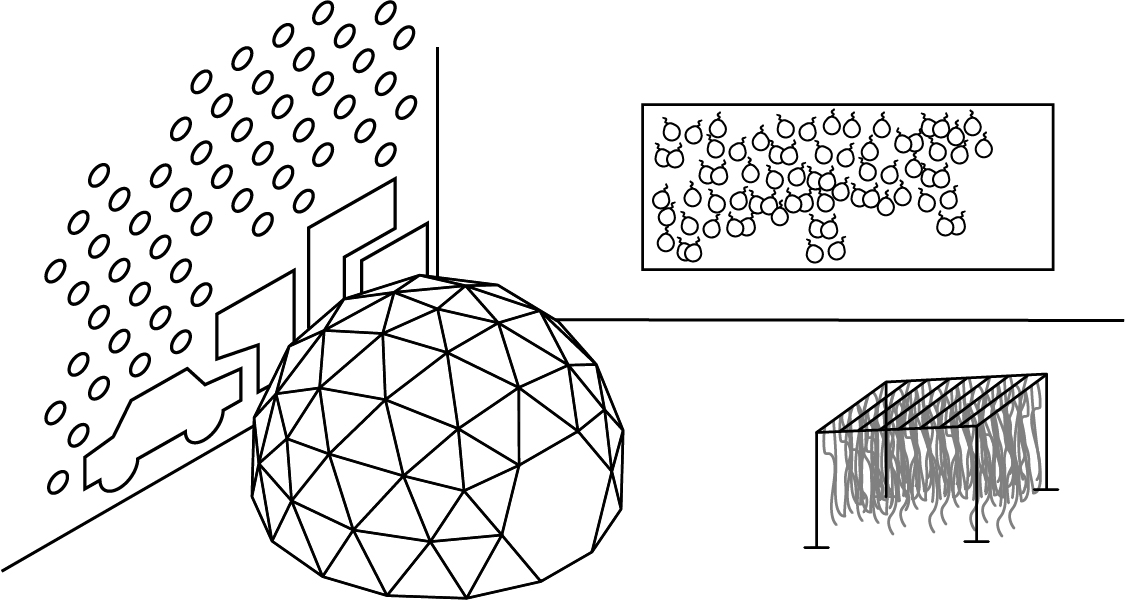

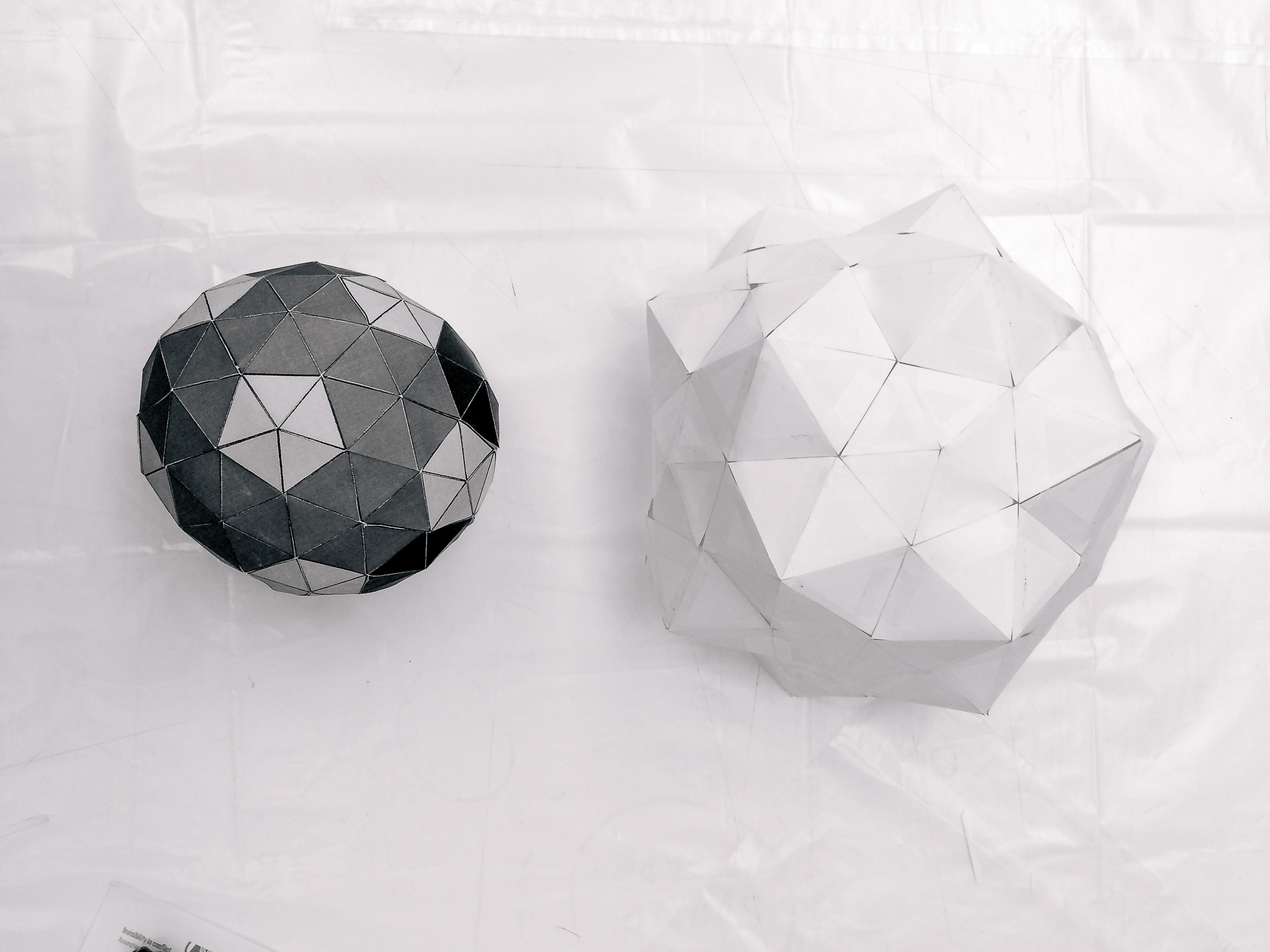


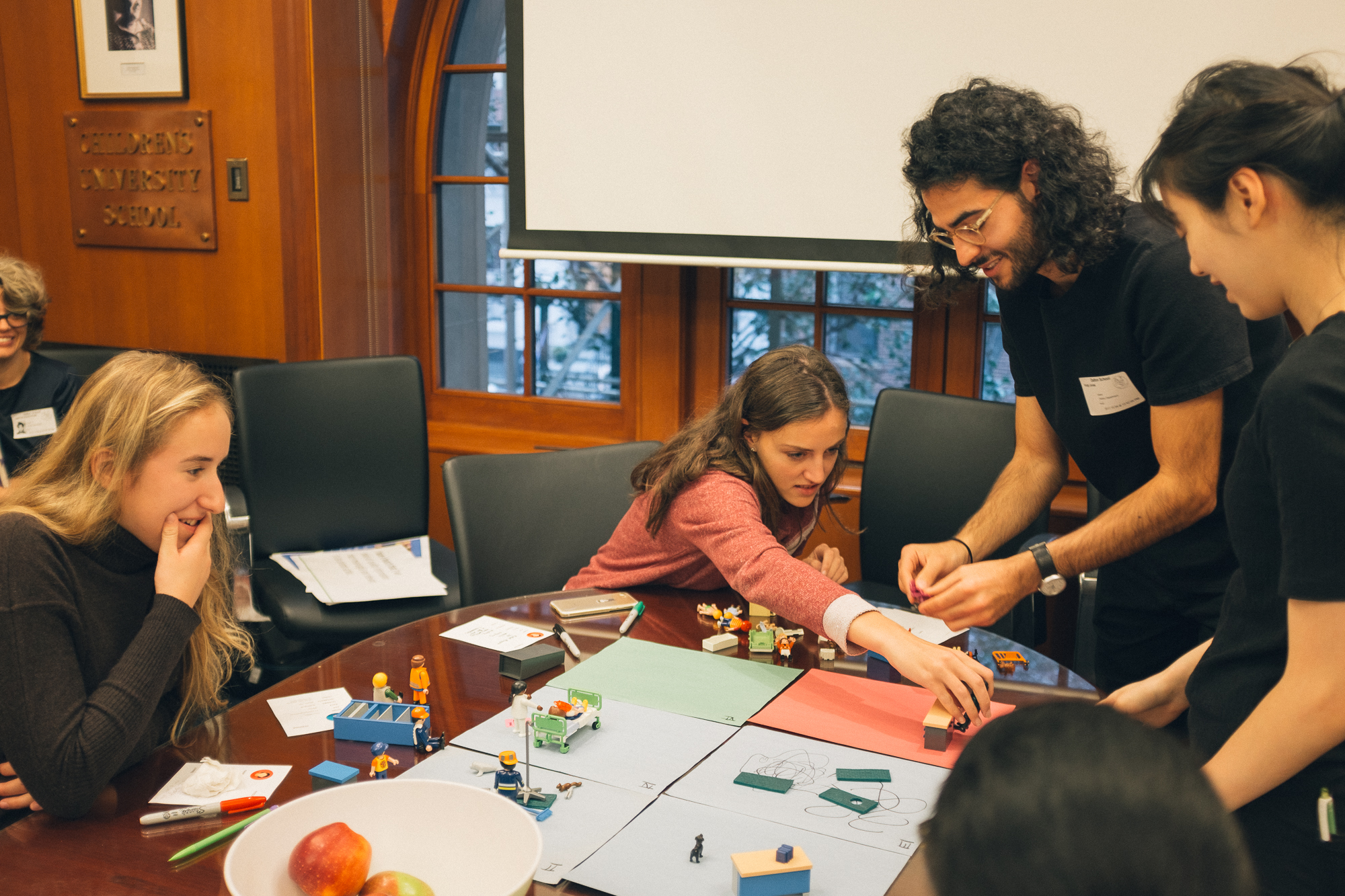


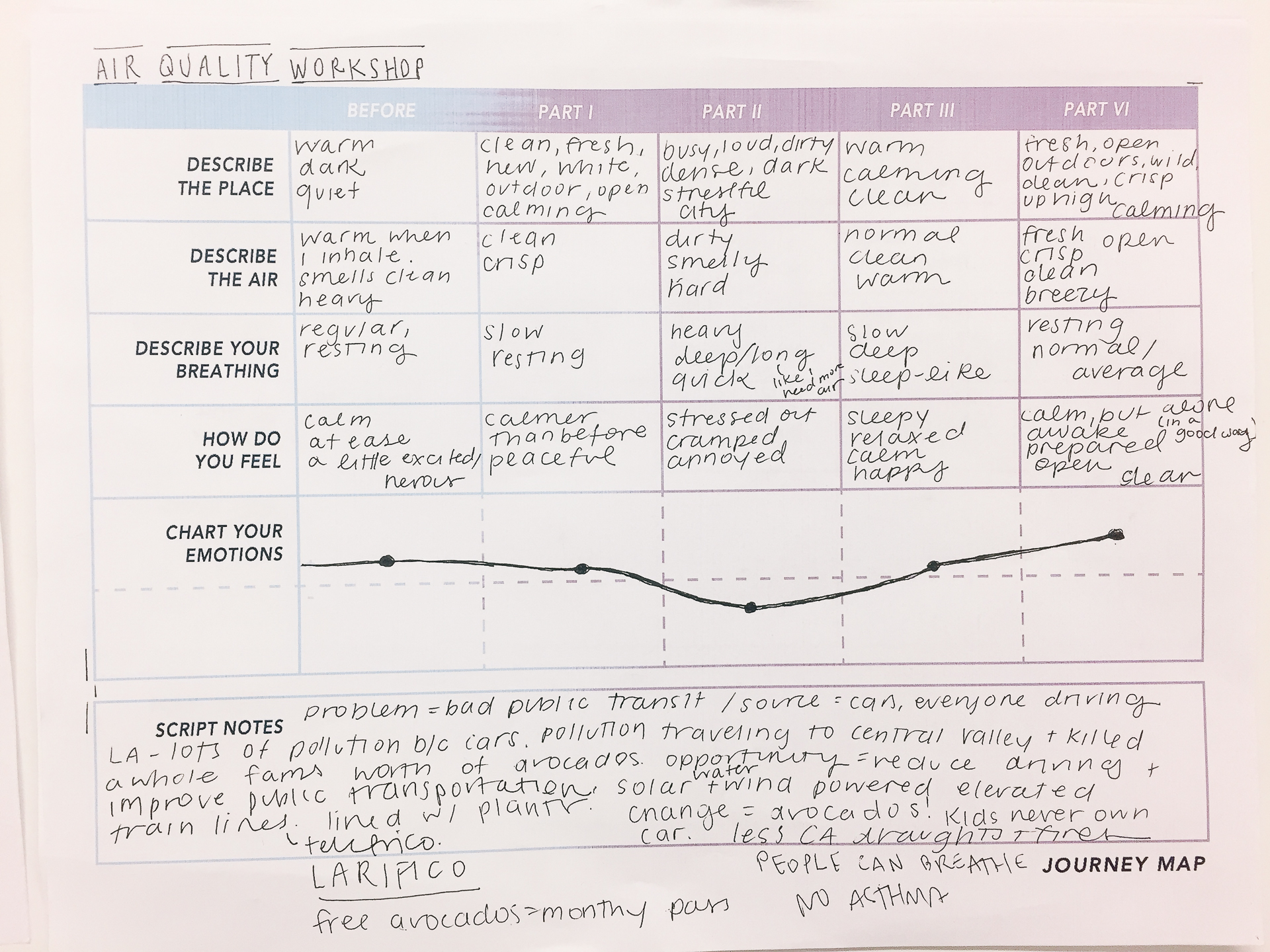

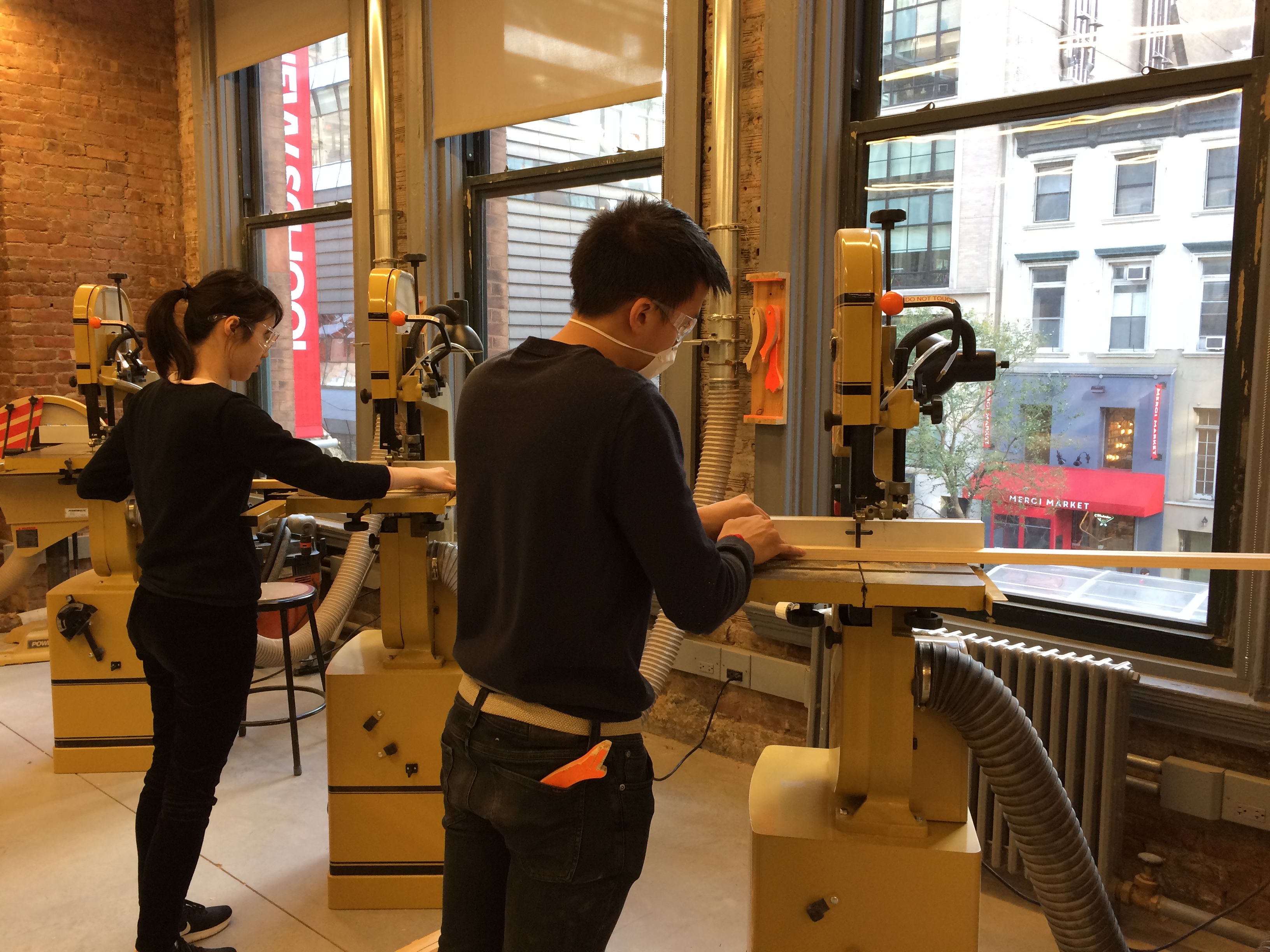
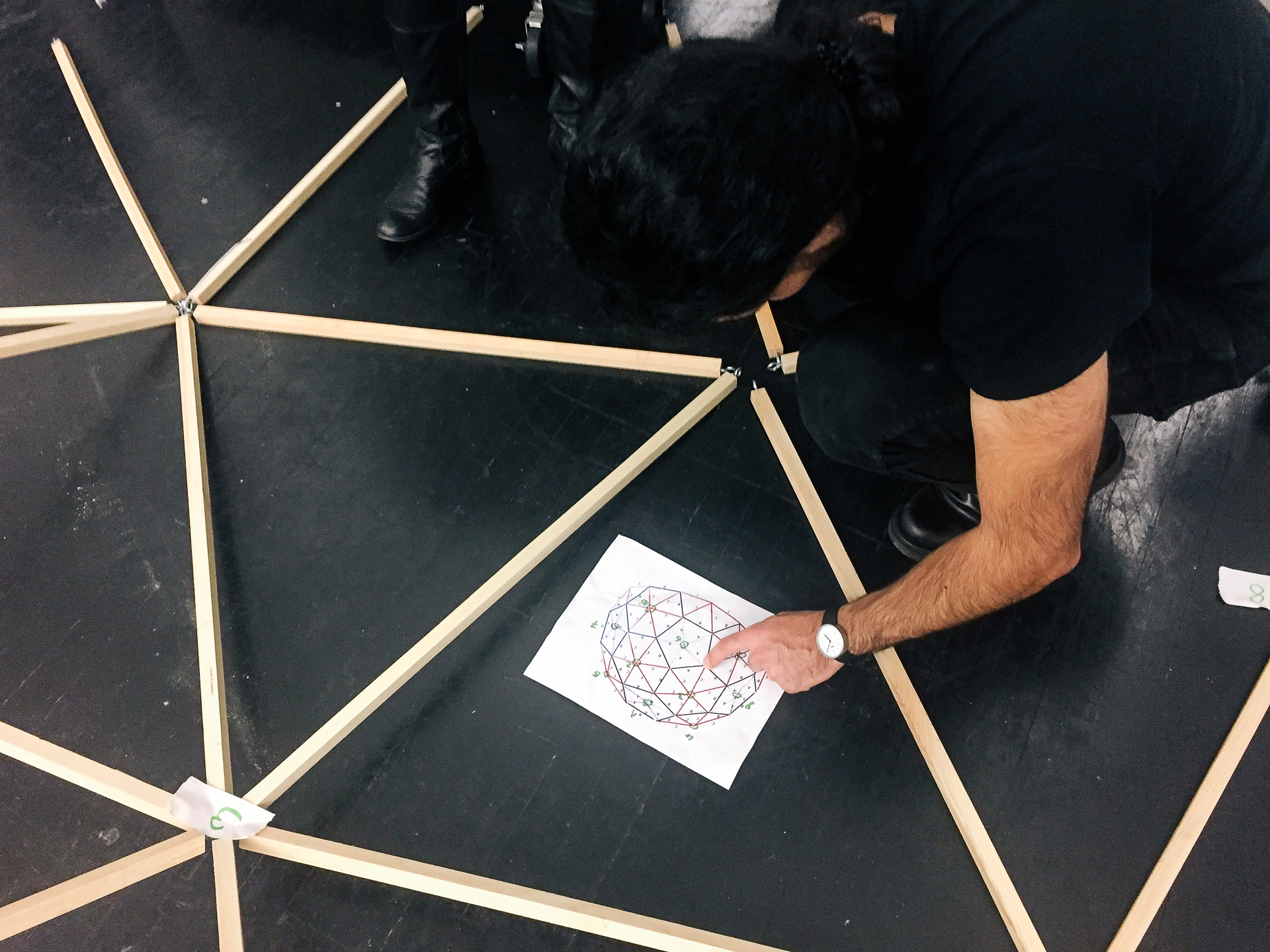
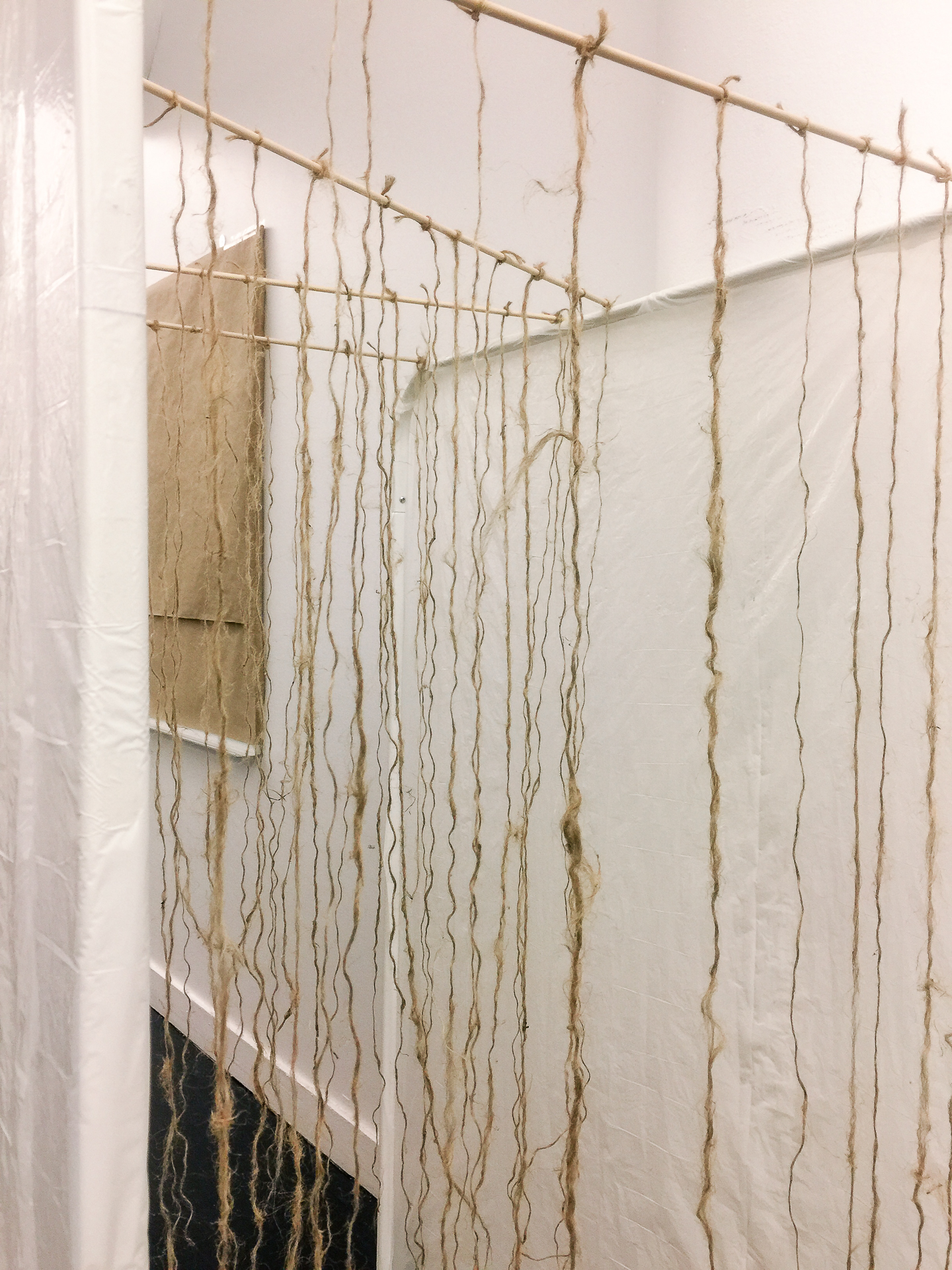
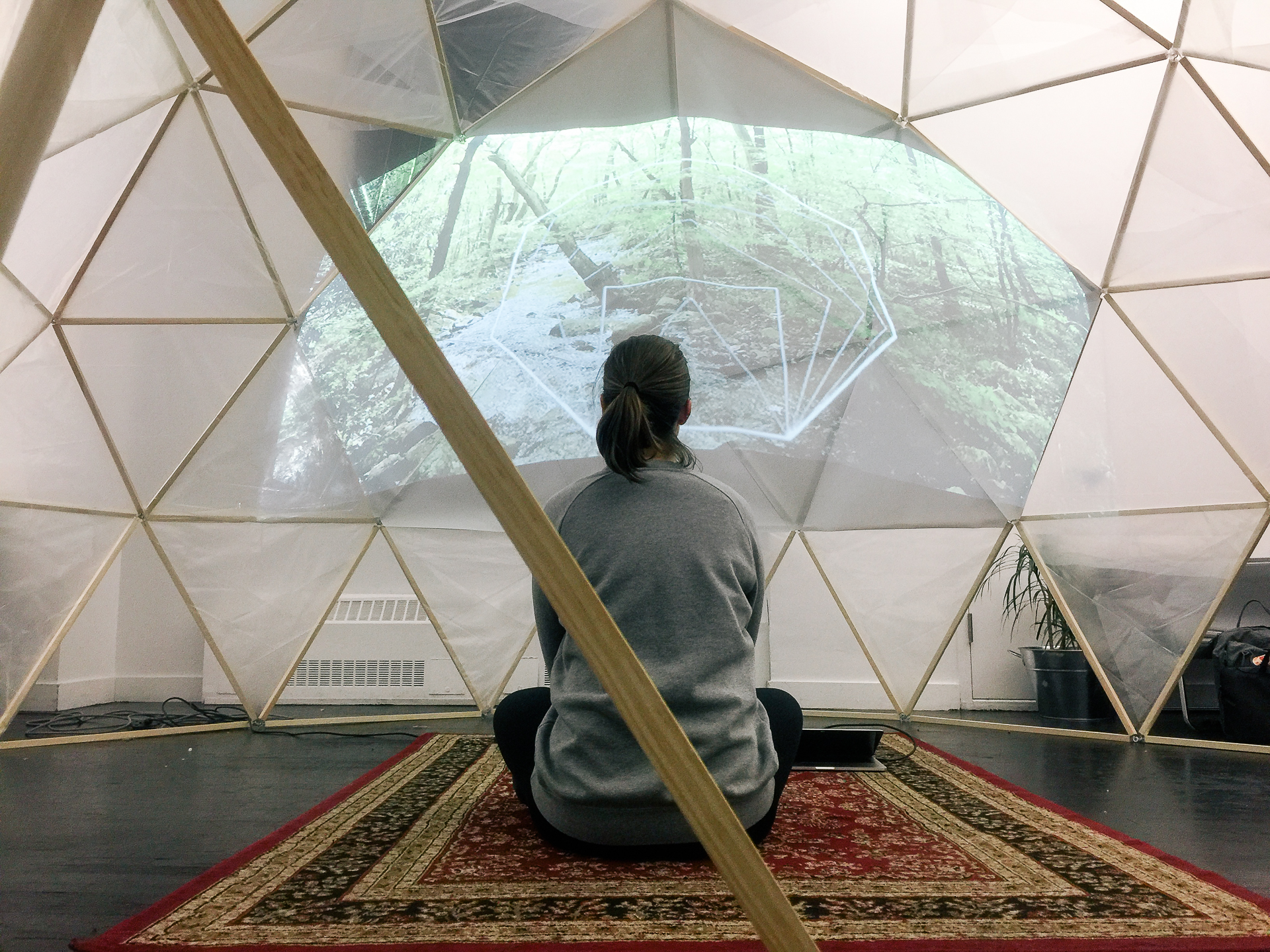
Air Spaces—Climate Sensing for Environmental Futures
Service Design, 2017
This DESIS Lab collaboration researches new roles and forms of citizen engagement related to climate change in the decades to come. Our specific case study has been air quality in New York City in cooperation with NASA Langley Research Center, WE ACT for Environmental Justice, The Dalton School, The New School, and NYC Center for Health Equity.
Context
This project investigated new roles and forms of citizen engagement related to climate change in the decades to come by exploring the tension between top-down and bottom-up forces. While there is widespread recognition of climate change as a pressing issue, there seems to be a genuine challenge on defining modes of engagement of regular people with the causes of climate change. One way of connecting climate change to people's everyday lives is to emphasize the connection between energy sources, climate change, and air quality.
NASA’s new satellite TEMPO to be launched in 2020 will monitor air quality in North America producing unprecedented high resolution (pixel size of 1km x 1km) hourly data. Intrigued by how would the satellite provided data impact the daily life of urban dwellers and potentially change the way we relate and engage with climate. There’s increasing popularity and affordability of new physical computing and sensing technology, from the “bottom-up” using the increasingly popular and affordable air pollution devices and systems such as SmartCitizen and Speck.
The key players in New York City are environmental justice groups such as WeAct, a well-known not-for-profit based in West Harlem dedicated to environmental justice and advocacy, that through ecological monitoring and data analysis, reveal how air pollution disproportionately affects communities of color. In the end, this project focused on education and co-created a curriculum for The Dalton School to focus on students engagement in a classroom context with air quality.
Air quality is not an equitable issue, and New York City is a prime example of these climate-based lines of segregation. Neighborhoods like Harlem and The Bronx have manufacturing or transit infrastructures that cause congestion, smog, and air of a much lower quality than Manhattan. Inspired by citizen science initiatives, this project aims to tackle climate science from a sensorial perspective to provide more entry and access to advocacy to the general populace. Experiences that would activate people were designed; hence we called it Air Spaces. The goal is to provide spaces for people to spark conversations on Air Quality that didn't overwhelm to construct a series of installation prototypes that tackles these issues.
What are the potential roles of citizen engagement in climate change? How would younger generations relate to climate sensing practices as the effects of climate change become increasingly evident?
Process
- Mapping
After studying as much of the systemic problem as possible, the creation of systems diagrams was an iterative process that was done throughout the project to understand the goals and how the project fits into this space. Below is the latest chart. - Inspirations
Air quality had two aspects about it that were the most fascinating. When it was terrible, it became physically visible and tangible, but it could also dissipate and become completely unnoticed. It also had a scale that was engulfing but dependent on the container someone would be in to understand the extent. After ideations of using the scale to create impact, it was time to make invisible particles physical. Parallel, Buckminster Fuller's Geodesic dome was a great inspiration.
Two guiding design statements accompanied the process: How might we make the invisible into something physical? And, how might we create an experience that sparks change? - Iterative workshops and provotype
Using a projection experience with aromatics as a provotype would be tested with students. Participants would fill out a journey map as they went through the experience to allow for a better understanding of they're relationship towards air quality. Afterward, the students mapped out their thoughts and created a short skit that embodied their knowledge and desires of the future of air quality. We ran 5 workshops in total. Making the insights from the user research generated in the workshop, the construction of the installations began.
- Installation Layout
A full exhibition experience was envisioned that would guide people through a sensorial understanding of air quality climate science. Users would first walk through a constriction tunnel consisting of dangling threads that mimic aspects of bad air, and then enter into the "air bubble" where they would experience a positive air experience. Finally, a wall of reciprocity would allow people to exhale and leave a message and their breath for others to experience.
- Installation 1—Constriction Tunnel
In this workshop, many participants used words such as “claustrophobic” and described bad air quality as sticky. Poor air also has a cumulative effect and collects on our bodies. By creating small pathways where frayed twine hung to simulate these sensory descriptions the research participants described. Forcing people to crouch down and walk through a small chamber created this feeling of confined space, scenes were people often notice changes in air quality. The inside was spritzed with our bad air tonic uniquely crafted for the workshop.
- Installation 2—Air Bubble
The journey maps showed that guiding people through breathing exercises and positive air analogs after sensing bad air created more thoughts and conversation. Large, open spaces were also consistently mentioned as being associated with good air. Guiding people to a positive experience inside a giant bubble created this sense of atmosphere and scale. A projector and screen in the dome that showed positive air environments with an animation that guided participant's breathing was the result.
- Installation 3—Exhale
Giving the users, so many inputs helped to cristalize the importance of creating an outlet to express their thoughts. Findings were that in the workshop the stories and conversations produced when participants created a skit and explained it to each other was powerful. It was paramount to create a similar space rendered in a more tangible form. A final wall where visitors could breathe out into a balloon, and write a message or thought on it was another station. They would then share it by pinning it onto the wall. In a way, this was the perfect closing for the user process. It created a poeticness and live metaphor for the act of breathing, inhaling the sensory experiences and exhaling their thoughts and feelings afterward.
Curriculum
The booklet for environmental advocacy groups and schools is introducing five steps to bring the exhibition experience into the classroom. It’s focusing on the following question: How might change happen, if we were able to experience air more viscerally?
In the workshop, students will be guided through an experience that will immerse them into various air quality contexts, a guided breathing exercise to wrap their heads around the concept of air quality and to be mindful of what they introduce into their bodies every day. The content is structured as the following: Visual Journey, Group Brainstorm, Group Mapping, Imaginative Sketch, Shareback, and Notes. Through a series of design exercises, students will crystallize and gain a newfound agency in their understanding of air. They will also imagine a future of what air quality could be. Air might be fleeting, but understanding and talking about it is not.
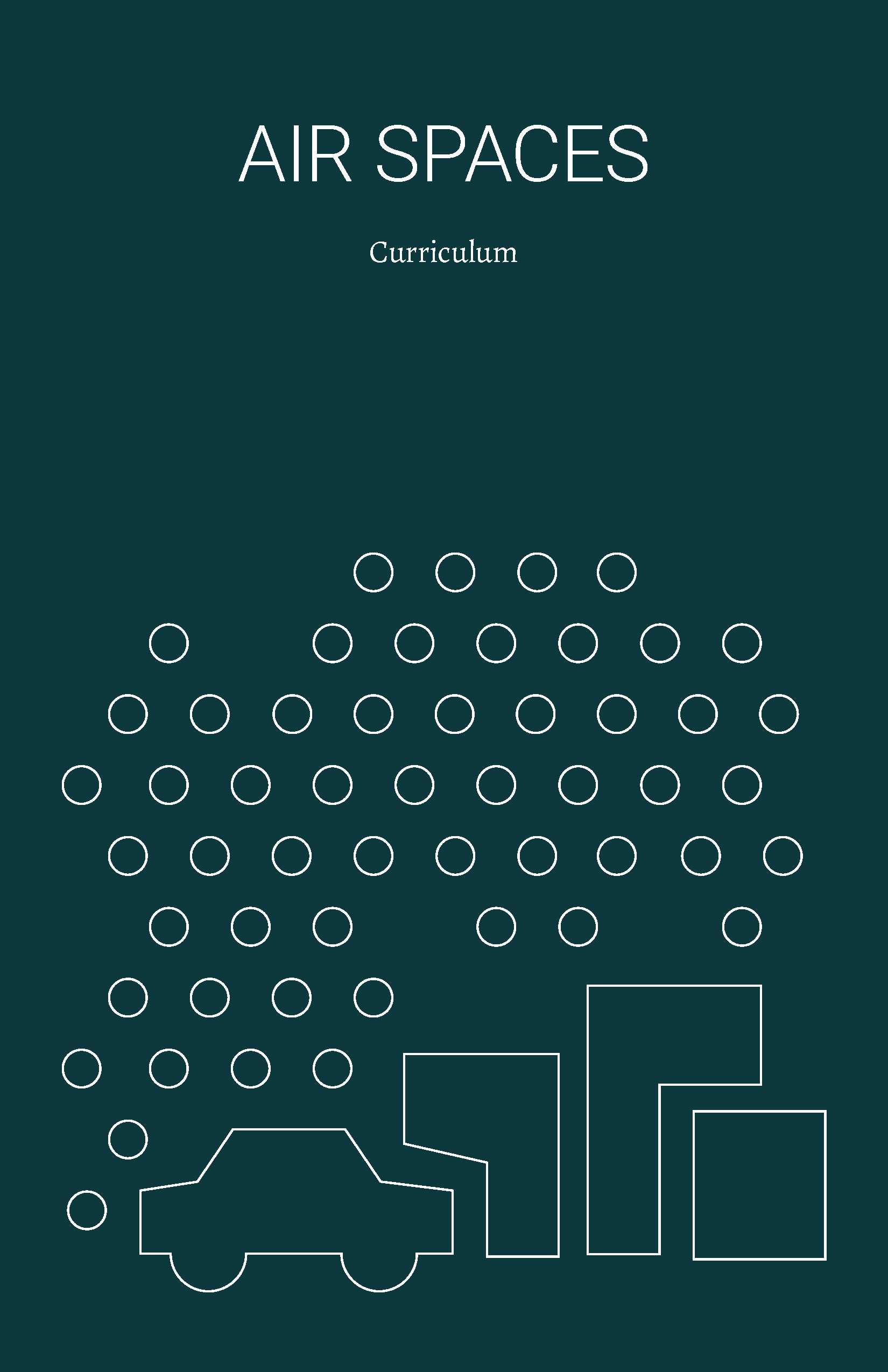
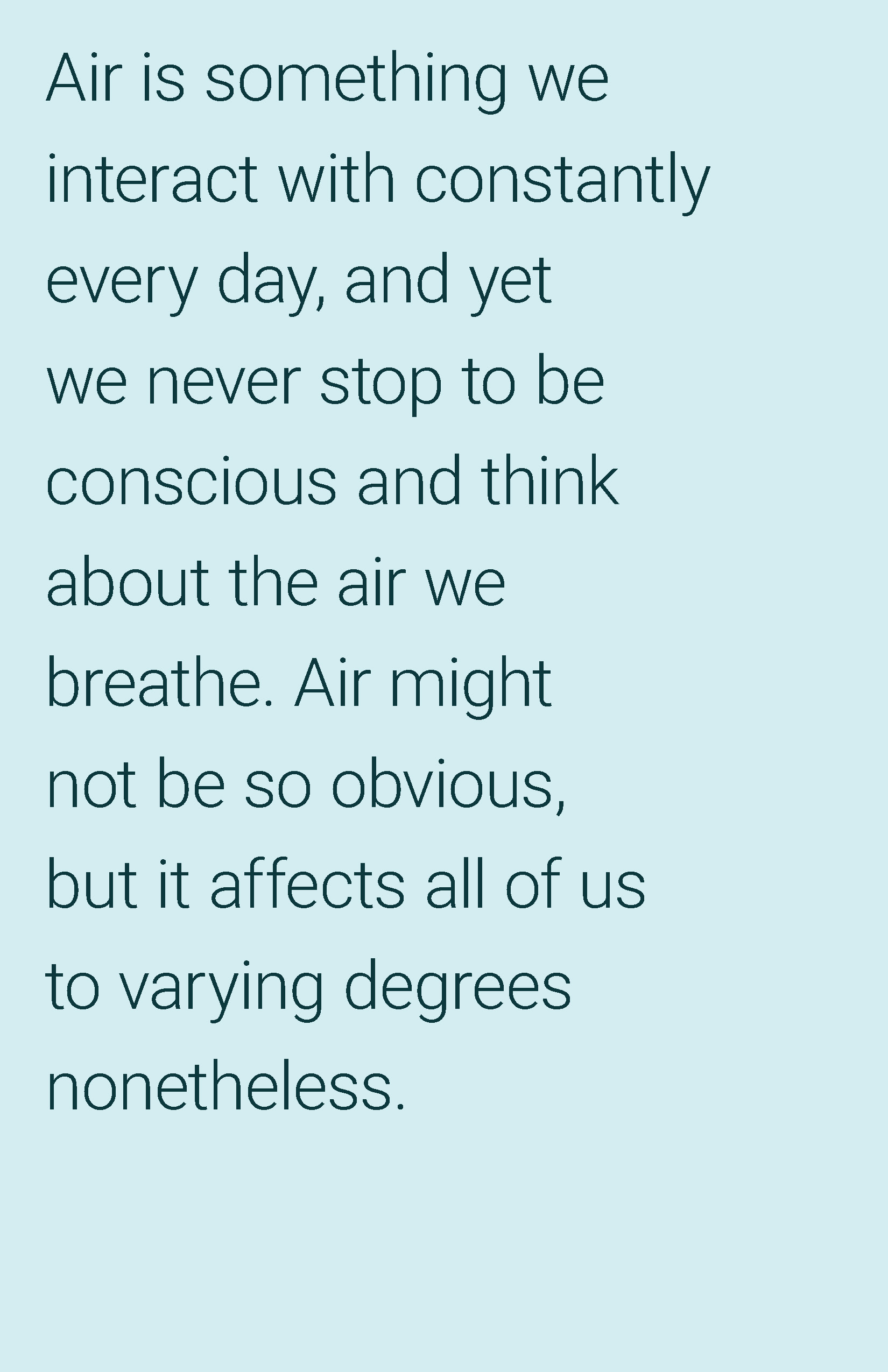
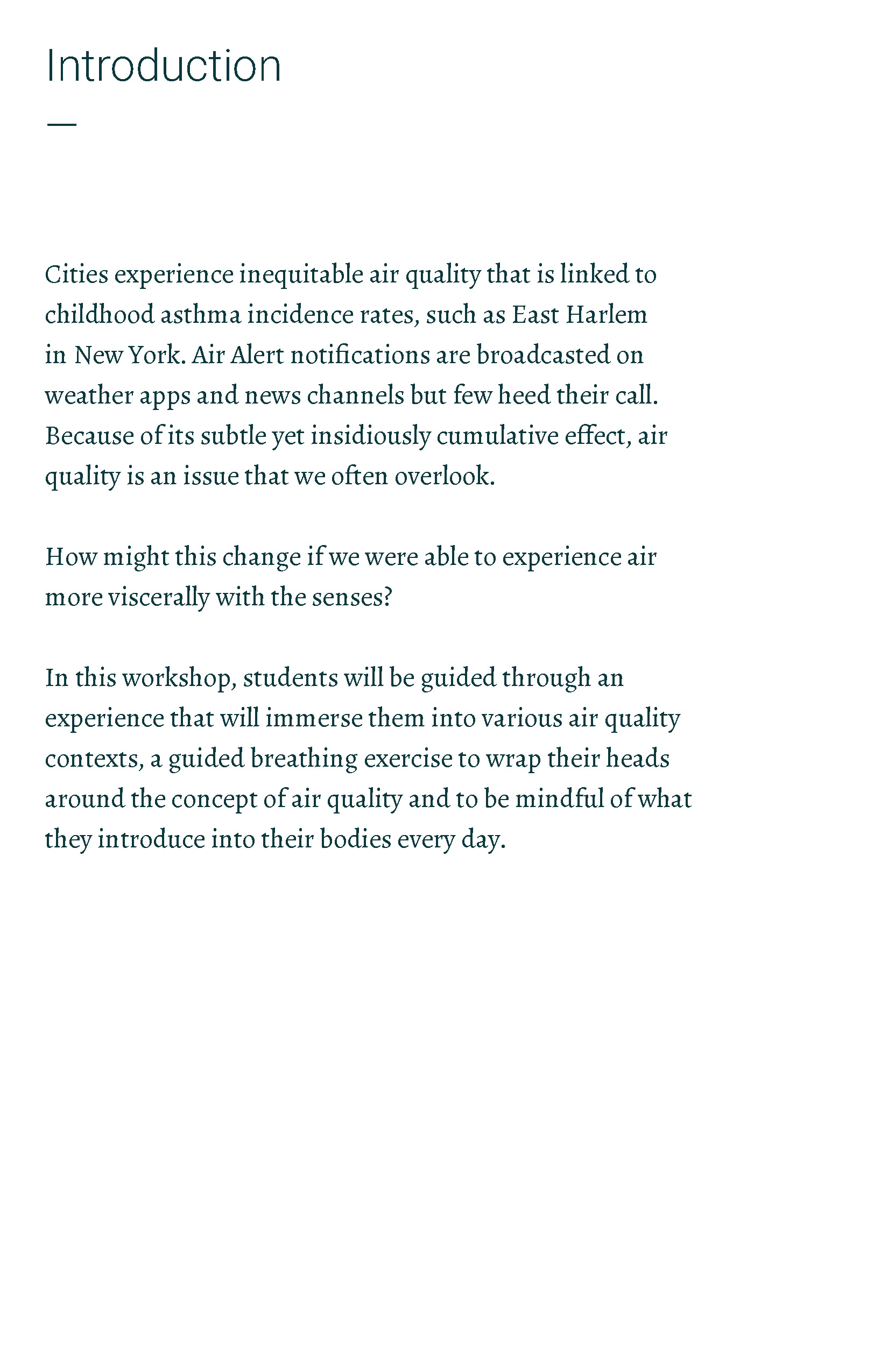
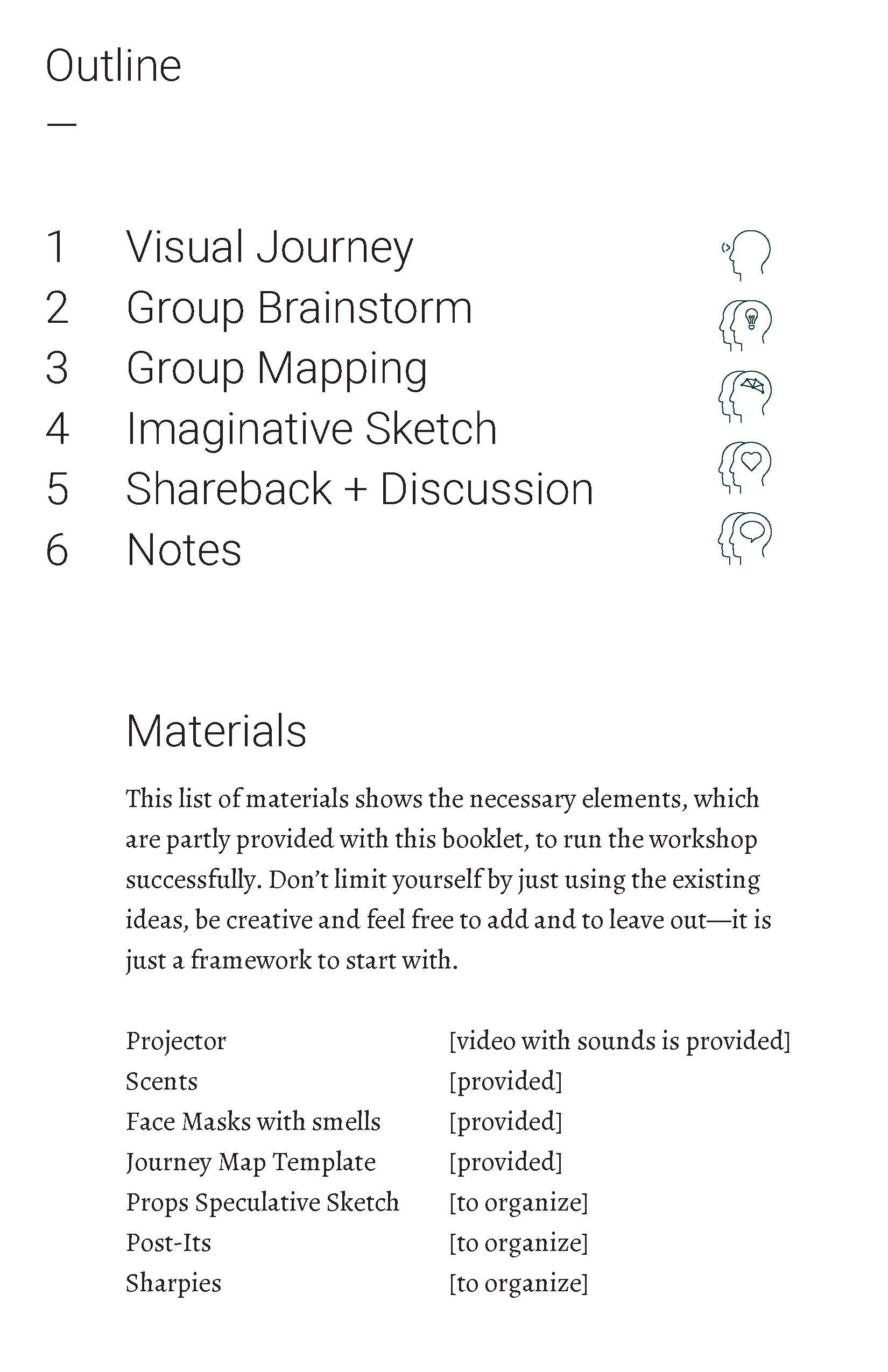
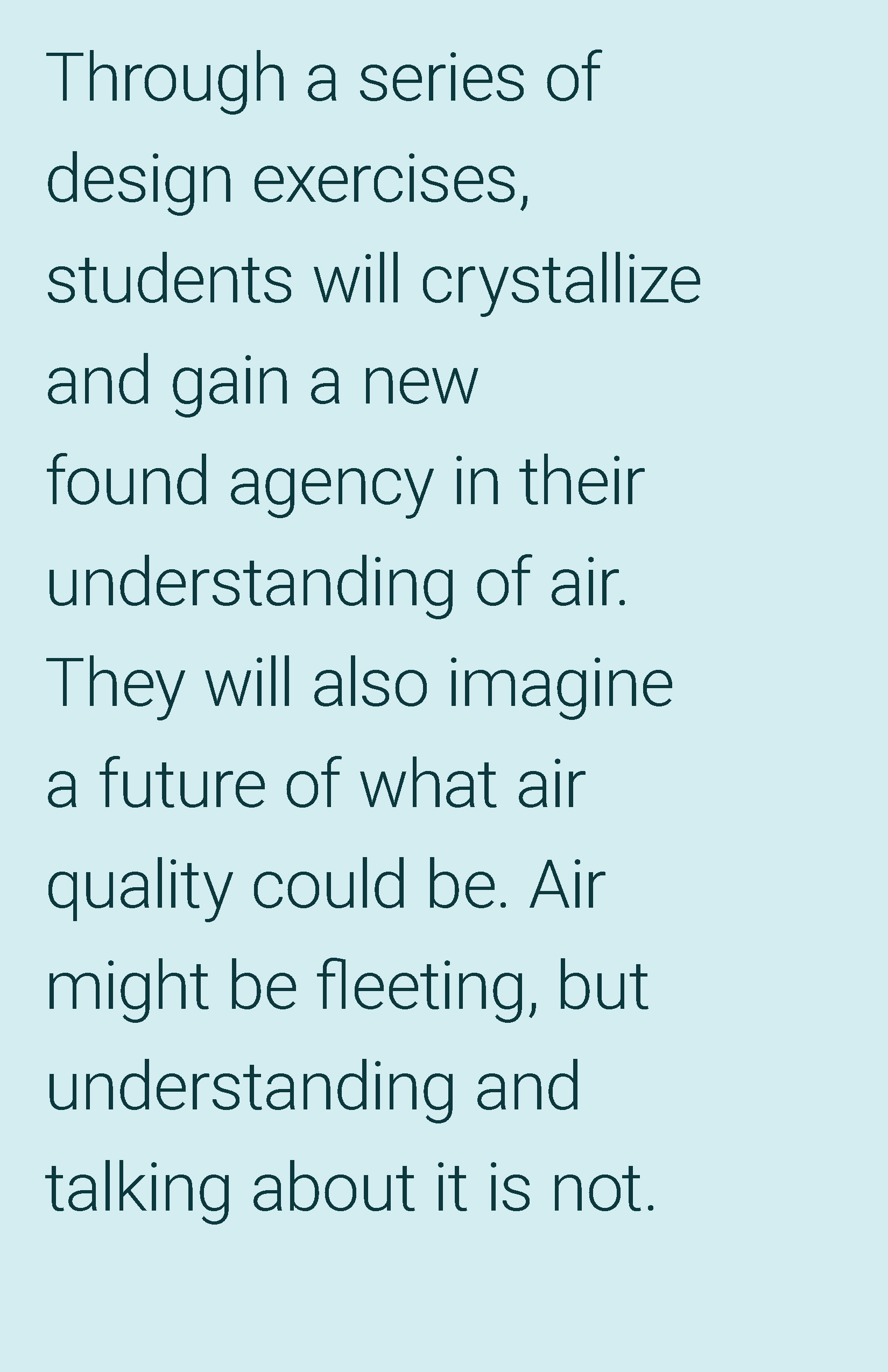



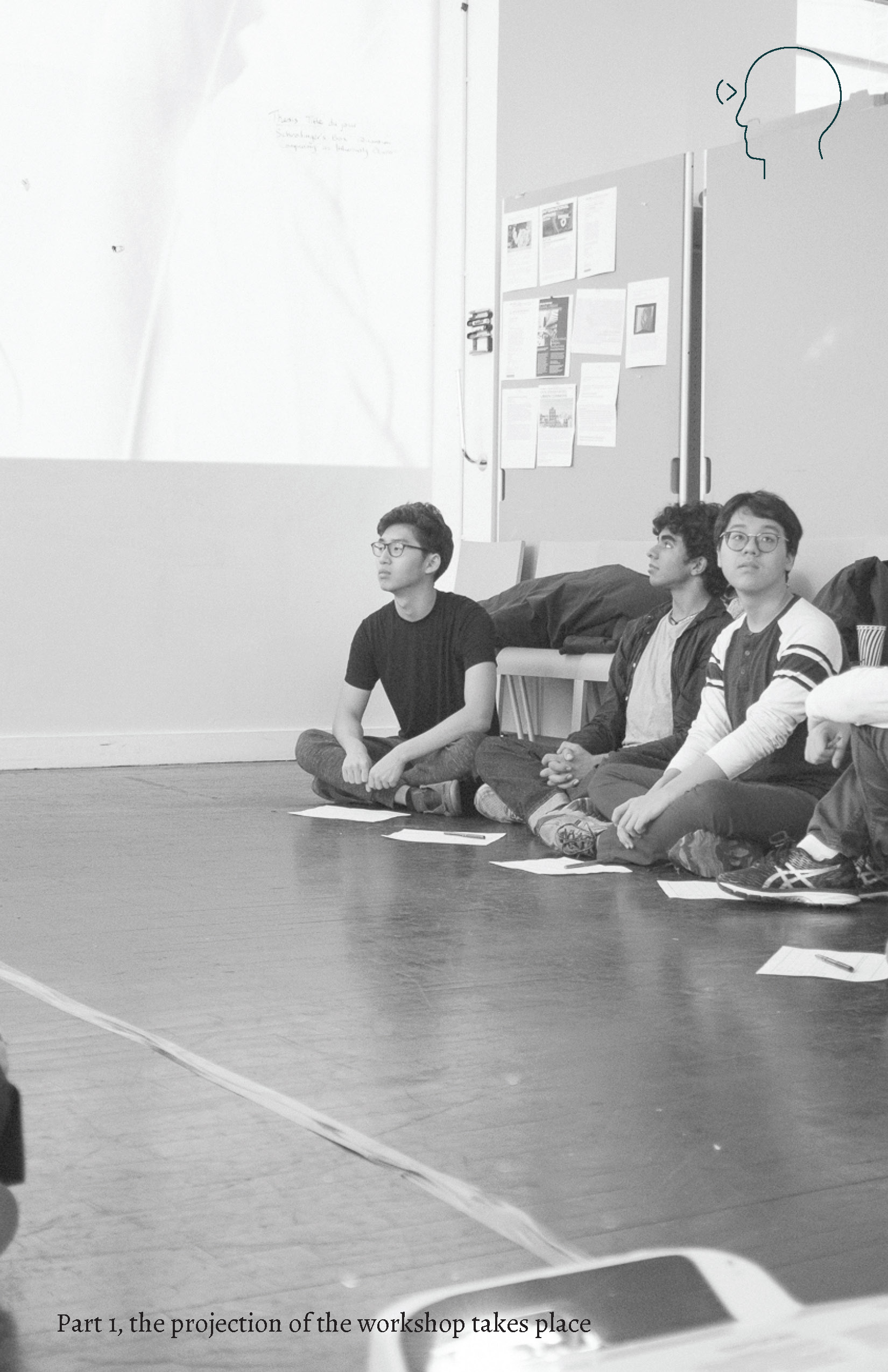

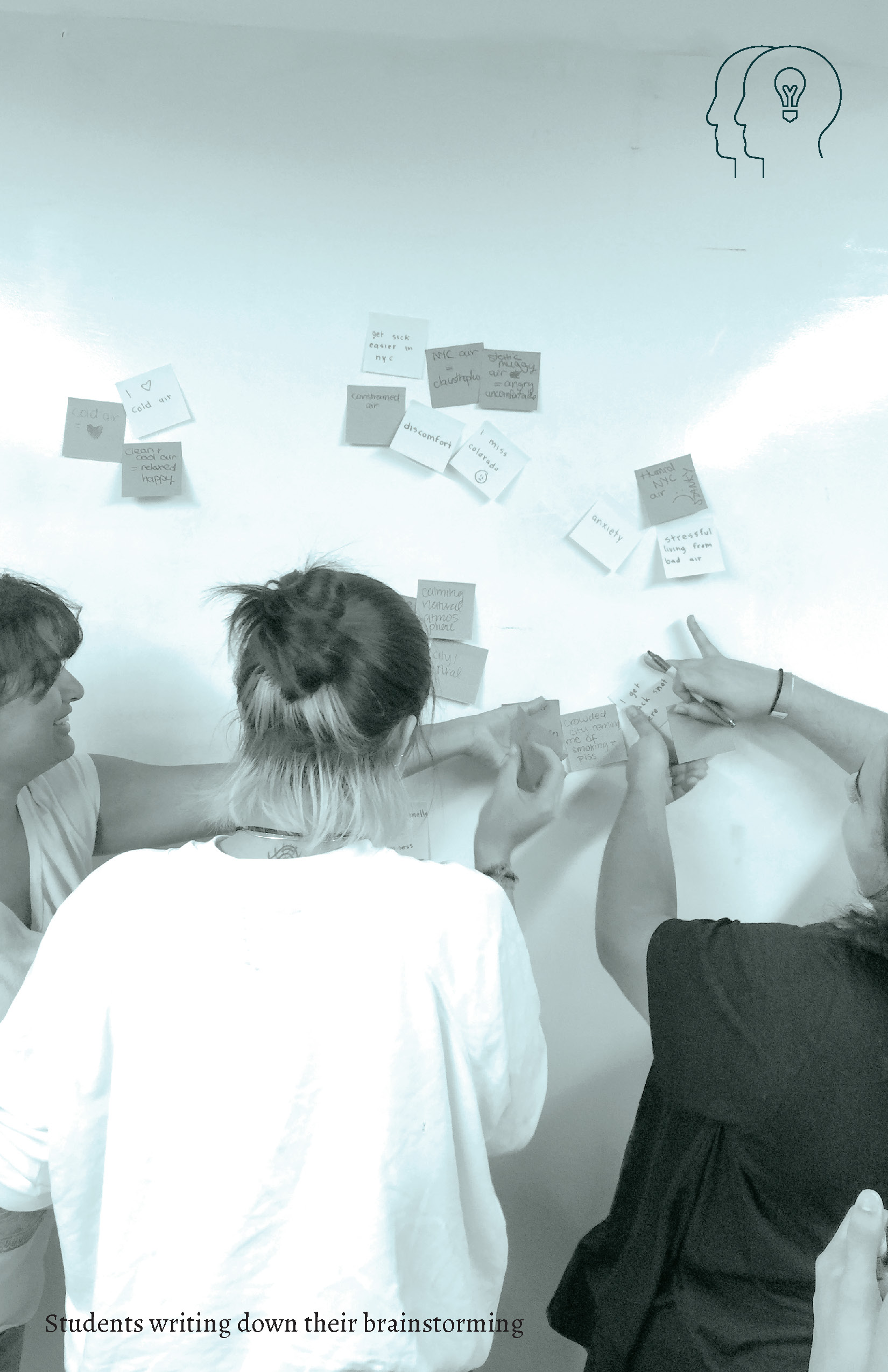

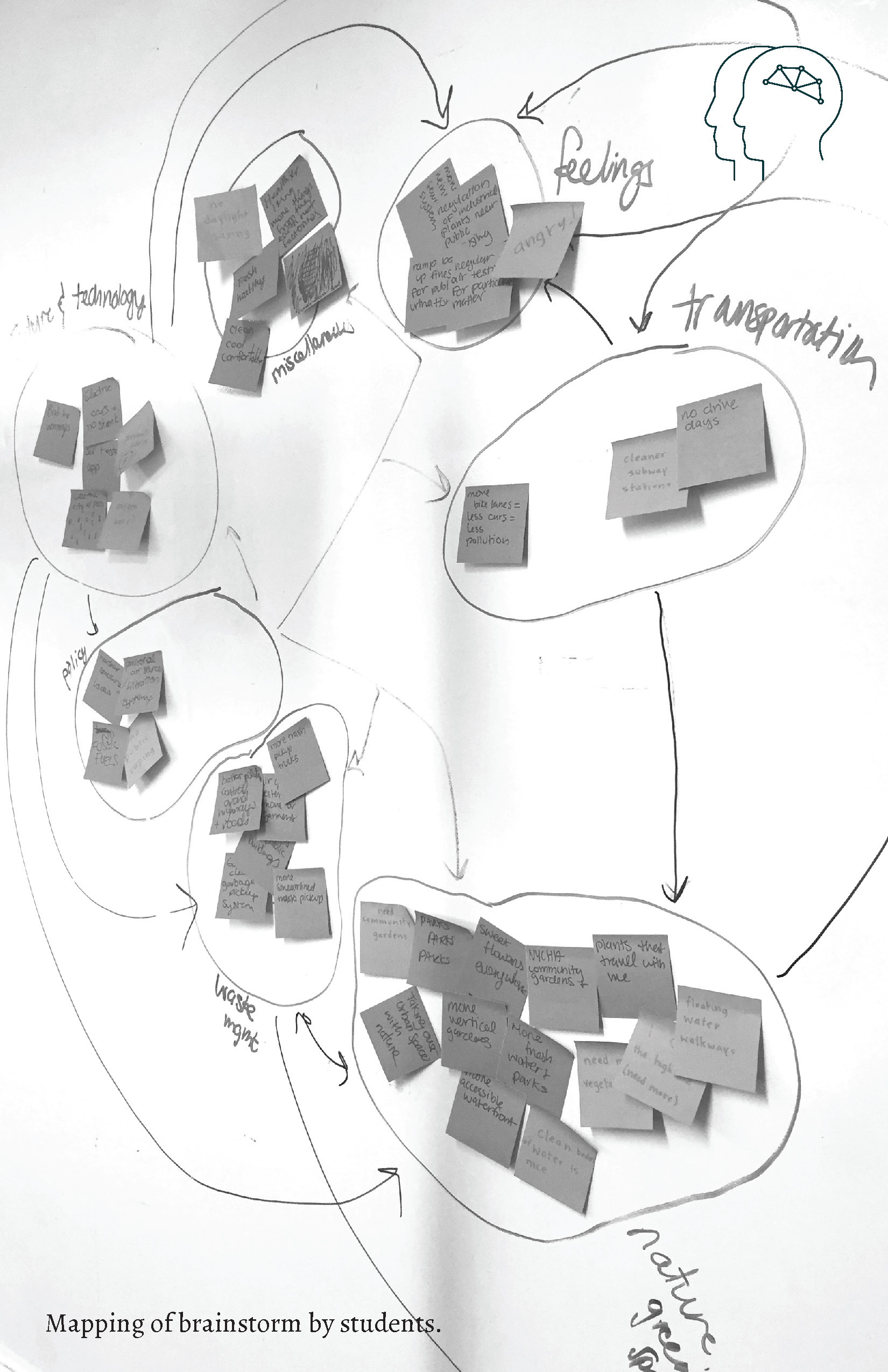
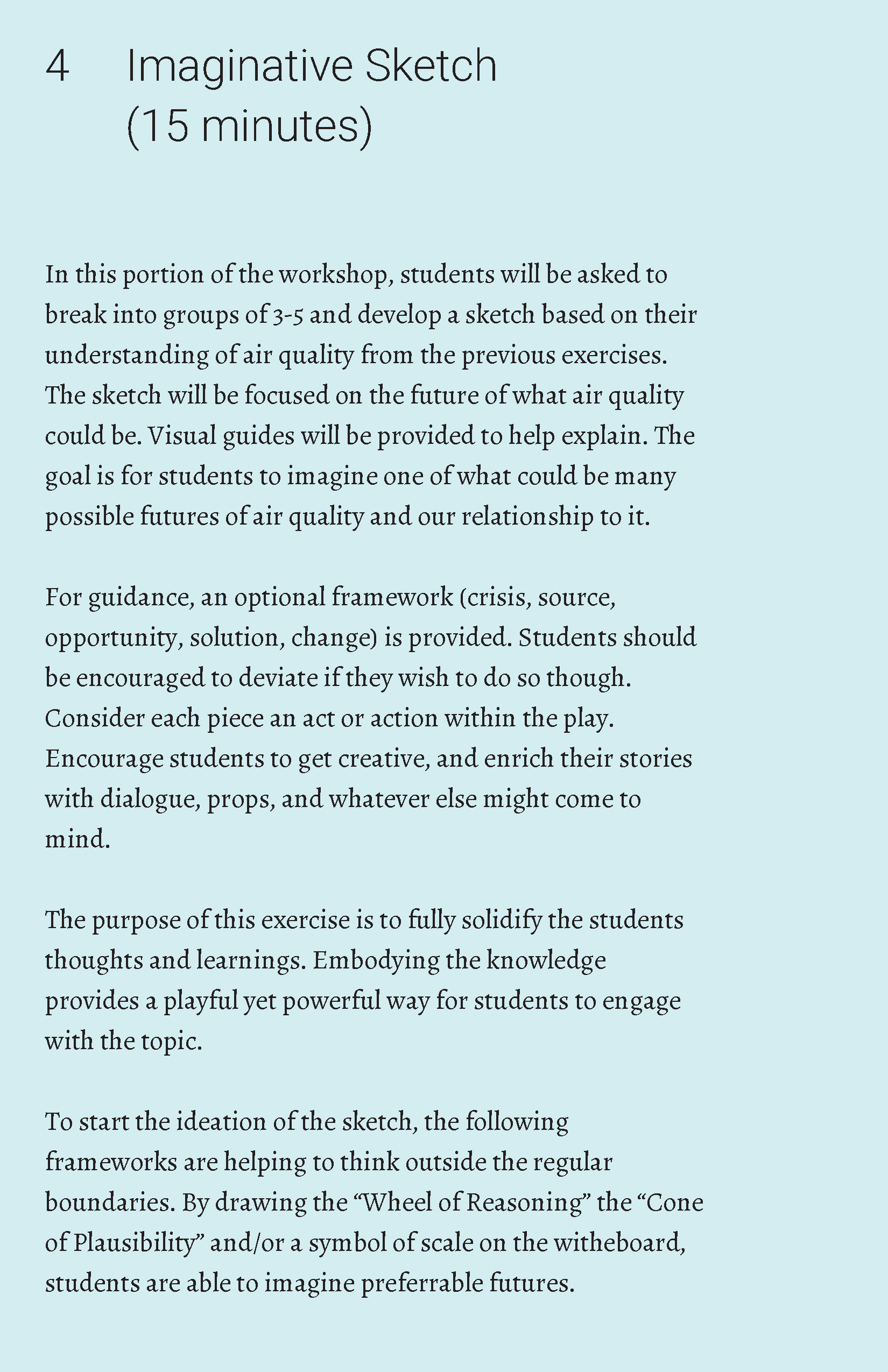

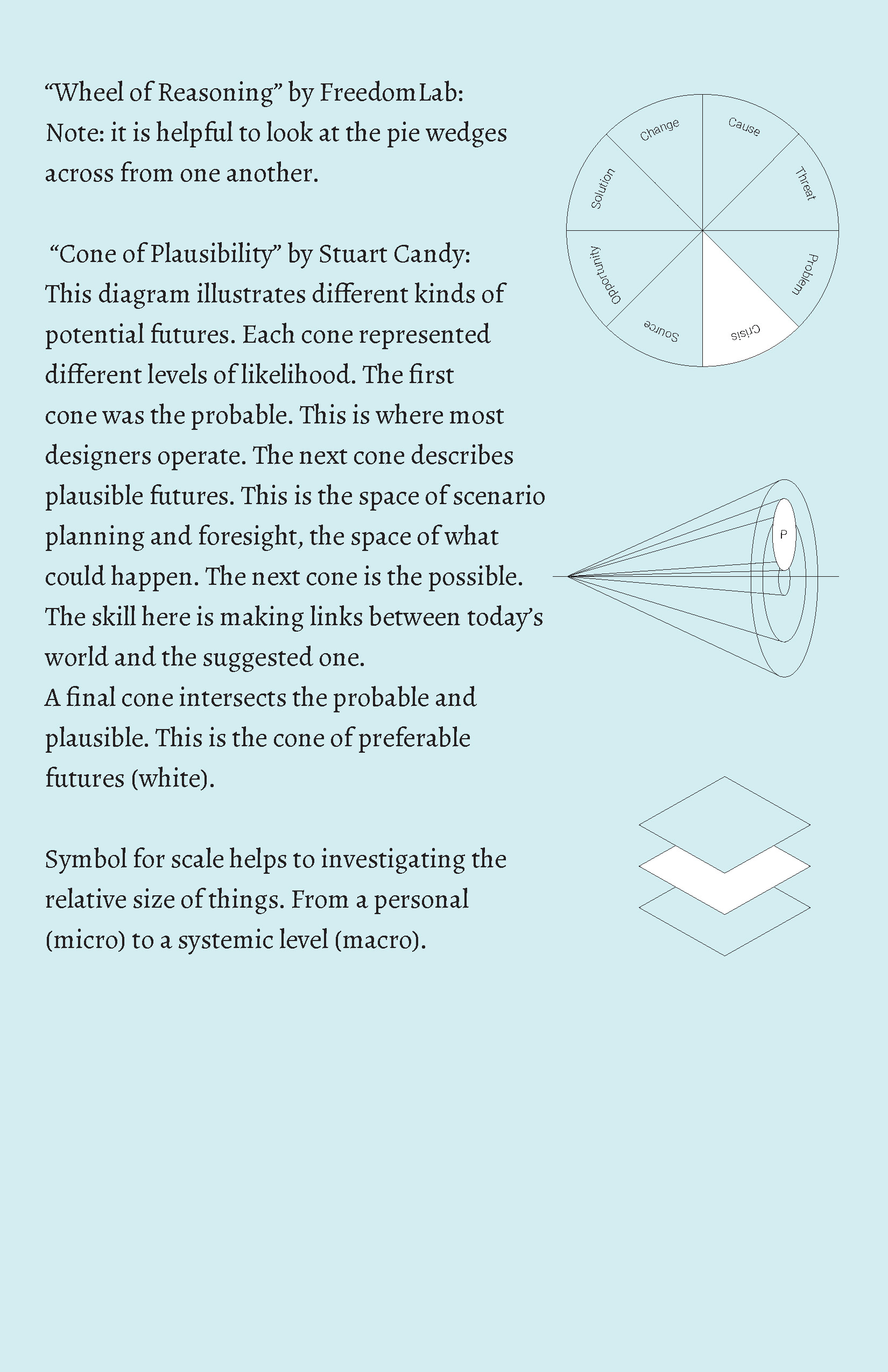

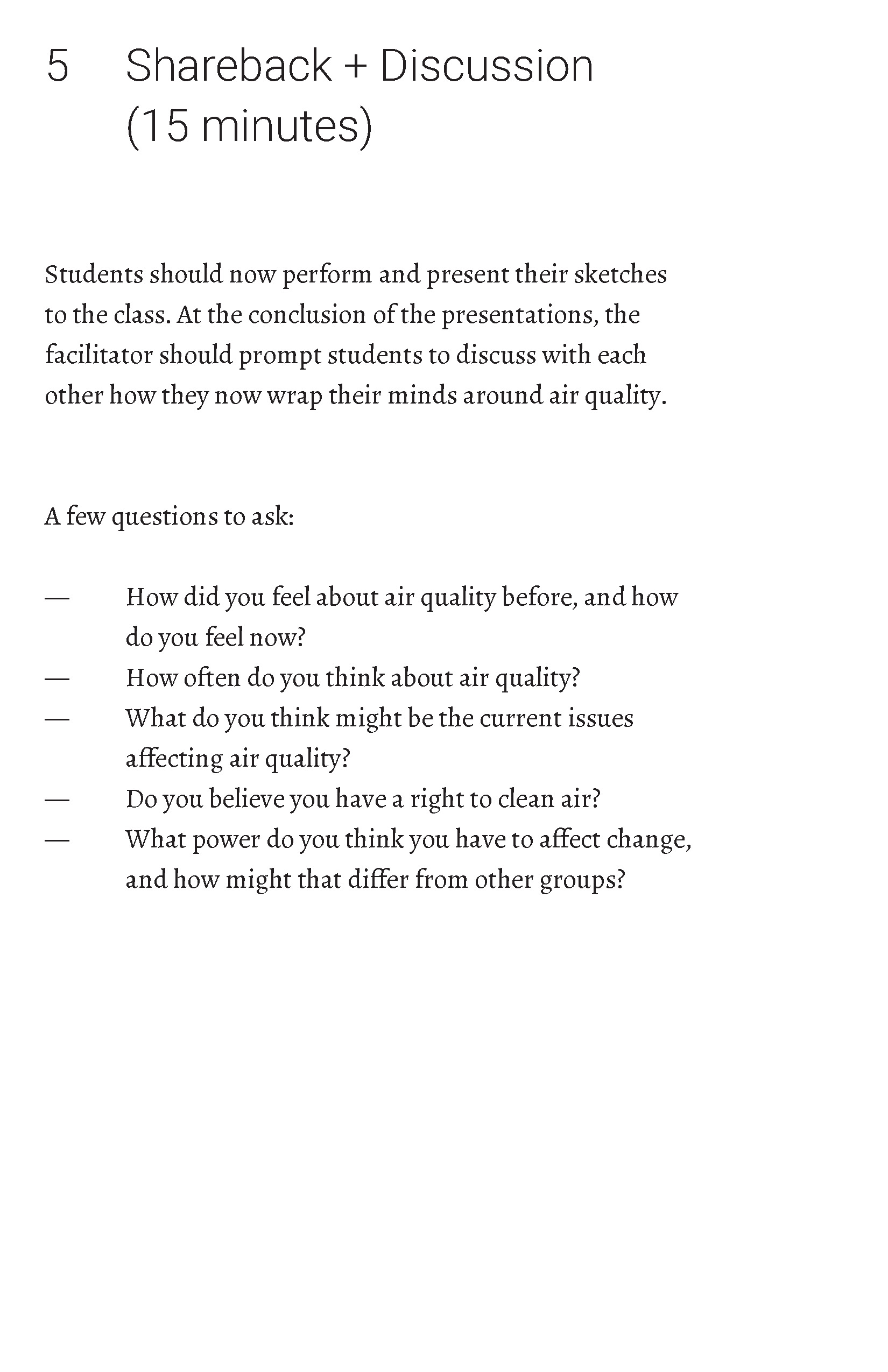


Conclusion and Takeaways
Creating spaces can have a profound effect on people. The Air Bubble and balloons lived on after the project was presented at the final critiques. The installation was supposed to be where people could reflect and think about their relationship to their air quality, but so much more emerged. Classes were conducted inside, critical debates were held, and people blew off steam and bonded during the craziness of semester finals. It became a space to engage and listen and at the end of the day that's what drove this project. The project is now being submitted in tandem with the other team in the studio class for a fully rendered exhibition at The New School. WeAct is considering commissioning installations in their community centers for people to experience, and packaged a printed curricula of the workshops and findings are to be disseminated.
If anything what is gained from this experience was understanding how experiences can create shifts in people that will hopefully lead towards larger movements of change.
Credits
Thanks to Anh-ton Tran; Tung Ling; Lara Penin, Associate Professor, The New School; David Young, Designer, Faculty, The New School.
Further thanks to Bruce Doddgrigge, Head of the Chemistry and Dynamics Branch, NASA Langley Research Center; Tenya Steele, Director of Environmental Health, WE ACT for Environmental Justice; Brendan Matz, Science Research Program Co-Director and his students, The Dalton School; Bhawani Venkataraman, Associate Professor of Chemistry, The New School; and Alyssa Creighton, Community Engagement Specialist, NYC Center for Health Equity.